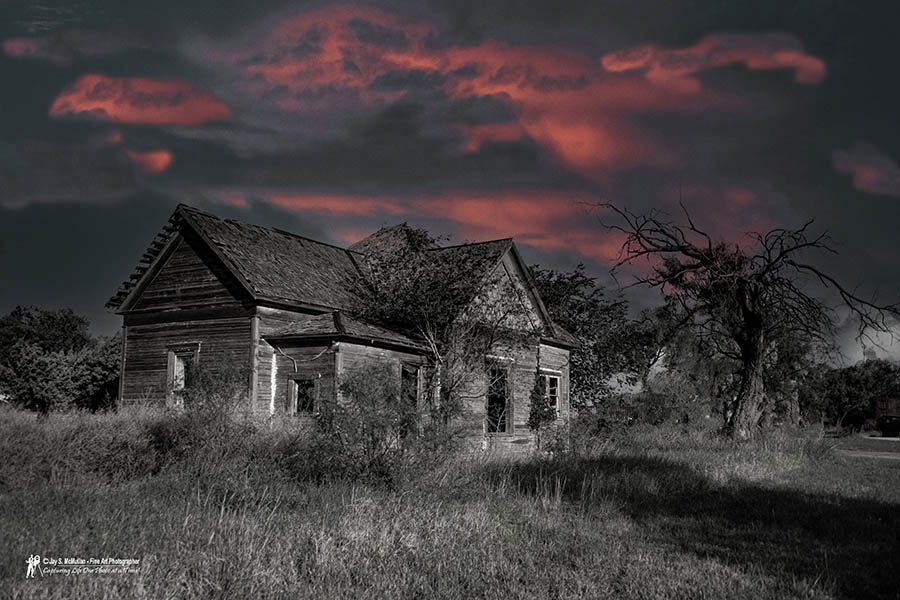Basic Photography Course
Lesson 3 - Composition

In
order to be pleasing to the eye, all forms of art must have the proper
composition. Just as there are millions, perhaps billions of songs,
each one has it's own unique set of notes and time signatures making
it separate and distinct from all others. Photographic composition is
more difficult than composing in the other visual arts as painting and
sculpting. A painter or sculptor can position his subject in any position
he chooses. Photographers, many times do not have this luxury.
Composition
is simply placing the subjects in the photograph into positions that
make the entire photograph visually stimulating. Since the subjects
of photographs cannot always be moved, the photographer must constantly
be aware of the camera position in relation to the subject. Moving the
camera closer or farther away from the subject or moving the camera
higher or lower in relation to the subject can make vast differences
in how the subject is perceived by the viewer.
One
of the oldest rules of composition, which applies to all the visual
arts, is the Rule of Thirds, or The Golden Mean. The Rule of Thirds
states that a scene should be divided into thirds horizontally and vertically
and that the parts of the whole scene should fall into a 1/3 or 2/3
proportion of the scene. Following the rule of thirds will simplify
composition. Some cameras offer the availability of ground glass viewing
screens with the horizontal and vertical lines etched into the glass.
BELOW ARE A FEW TIPS FOR GOOD COMPOSITION
Do not place the subject at dead center.
Keep
the subject away from the outside edges of the picture area.
|
By using a reduced shutter speed and panning, or moving with
the subject, the viewer can see the motion of the subject. If a
fast shutter speed is used and the camera is in a stationary position
the car will look like it is standing still. This kind of photography
is very easy to sell.]]\\ |
Arrange
light and shade so that the greatest contrast falls at the point of
greatest interest.
The
closer an object is to dead center, the less it catches the eye; the
nearer the edge, the more it attracts the eye.
Lines
intersecting at angles draw the eye; the nearer the angle is to a right
angle, the stronger the pull.
Parallel
lines that run across a picture tend to carry the eye right out of the
picture.
For
greatest interest, divide the scene into unequal divisions; do the same
with the area around the main subject.
|
In this photograph, the eye is led up the stairs and down
to the door and back again, in an orderly progression. Notice how
the stairs are the main subject and are conspicuous by size. They
also fall along the imaginary intersection of lines in our Rule
of Thirds
|
Never
let a line cut your picture in half either horizontally or vertically.
Eliminate
useless foreground or sky.
The
main object should be the most conspicuous by size, contrast, or position.
The
various elements of a picture should be arranged that the eye is led
in orderly progression from one element to another, resting longest
on the principle object.
|
The pipe, coming in from the right side, leads the eye into the scene and focuses on the tallest windmill then the eye is led down to the other windmills. The tank on the left side frames the photograph. The tallest windmill falls along the right vertical line on the rule of thirds. |
The
skyline should never be placed on the centerline of the photograph. Place it
about a third of the way from the top or bottom of the photograph.
The
eye naturally follows light. Glancing across a picture it goes from
the dark areas to the light ones.
A
white spot on a black background pulls the eye more than a black spot
on a white background. A small white spot on a black background pulls
the eye more than a large white spot on the same background.
Which
box draws your eyes in the most? |
Arrange
the pattern of the picture so that the eye enters from the lower right
or left hand corner.
In
color photographs, the emphasis is on color and brilliance. In black
& white photographs, the emphasis is on tones, textures, and contrast.
If
the picture shows people moving, leave more space in front of them. Similarly,
leave more room
in the direction in which people are facing or looking.
|
This photo appears to break the rules of compositon by the model facing away from the greatest area of the photo. It really doesn't though since the model has turned her face to the left where there is more room on the photo. |
Remember,
all rules are made to be broken! Do what works for you!
I used to teach that lighting and exposure are different. While they are different, they tie together. Light refers to the light that falls on and around your subject. Exposure is how much of that light you allow your camera to capture. That is determined by the three things on your camera: 1. The ISO setting 2. The aperture setting and 3. The shutter speed setting.
As you are beginning to learn photography, leave your camera mode setting on P for Program. Doing this will allow the camera to determine the correct combination of aperture and shutter speed for the ISO setting on your camera.
Look through the viewfinder in your camera
and imagine lines being drawn vertically and horizontally, dividing
your camera into the Rule of Thirds. |
Photograph
your subjects, under different lighting conditions, placing items
with horizontal lines in the scene, across the imaginary top horizontal
line in the viewfinder, using the Rule of Thirds. |
Photograph
your subjects, under different lighting conditions, placing items
with horizontal lines in the scene, across the imaginary bottom
horizontal line in the viewfinder, using the Rule of Thirds. |
Photograph
your subjects, under different lighting conditions, placing items
with vertical lines in the scene, across the imaginary left vertical
line in the viewfinder, using the Rule of Thirds. |
Photograph
your subjects, under different lighting conditions, placing items
with vertical lines in the scene, across the imaginary right vertical
line in the viewfinder, using the Rule of Thirds. |
Keep
these photographs with the photographs from Lessons Number One
and Two. Mark each photograph showing which lesson they are from.
Look
at the photographs from Lessons Two and see if they followed
the Rule of Thirds and how they could be improved to make the
composition follow the list of rules.
See
if there are any of your photographs, that break the standard
rules of composition, that are still pleasing to the eye. |
CLICK HERE to go to Lesson One
CLICK HERE to Go to Lesson Two

